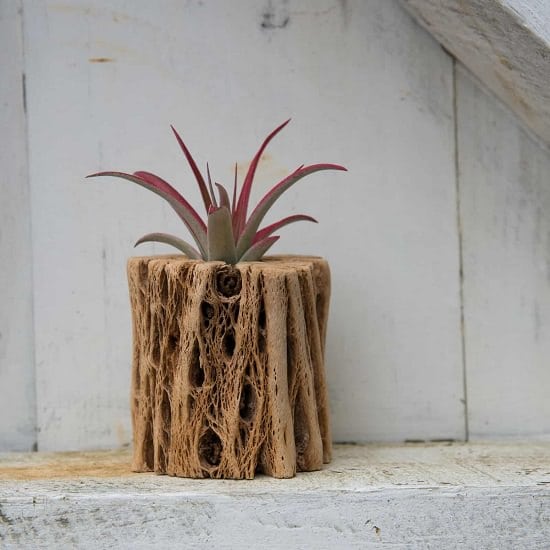If you know How to Fertilize an Air Plant correctly, it is very easy to maintain it. Here are some of the best ways to do it!
As air plants do not require soil to grow, fertilizing air plants is one of the most prominent questions of first-time growers. If this is your query too, this article will serve all the solutions. Learn How to Fertilize an Air Plant in the correct way!
Have a look at the mini vertical garden ideas with air plants here
How To Fertilize an Air Plant
The best way to do that is by misting or soaking the air plant in a solution of fertilizer and water. Keep in mind that nitrogen-rich fertilizers can cause the burning of leaves.
The answer lies in the way air plants absorb nutrients, clearly not from the soil. All tillandsias absorb nutrients and water from unique leaves and not their roots. So the application of fertilizer should be on the leaves, in the same way as watering air plants.
Best Fertilizer for Air Plants
There are many fertilizers explicitly made to fulfill the need of air plants. The instructions are provided on the packaging. You can also use bromeliad fertilizer monthly or quarterly. If you can’t get your hands on these fertilizers, use your balanced water-soluble fertilizer diluted to one-fourth of its recommended strength.
Our Tip: Instead of splurging money on commercial fertilizers, keep reading below for homemade air plant fertilizer ideas.
Natural Way to Fertilize
One fantastic thing about air plants is that it isn’t necessary to fertilize them. They will stay just fine without fertilization. Moreover, overfertilization is the reason why many growers kill them.
Still, if you are worried about the growth and health fo your epiphytes, use aquarium or pond water from time to time for dunking or misting air plants. This water is rich in many minerals and nutrients that are beneficial for the growth of these plants. Plus, it’s an all-natural approach that won’t harm your air plant!
How to Make Air Plant Fertilizer?
You can easily make a homemade fertilizer using the following method:
- Get a handful of fresh, moist moss having a vibrant green color. You can get moss from a tree, logs, yard, sidewalk or order it online. Or, check out this YouTube video to grow your own moss.
- Ensure that it has a few live strands attached to it.
- Chop it finely, reducing it to a texture that resembles a granular fertilizer.
- Combine 80% of the moss to 20% of a blood meal and put in a ziplock, plastic bag. If dried blood in the mixture gets settled at the base, give it a good shake before applying.
- The sooner you are going to use the fertilizer, the better it is.
- Add this DIY air plant fertilizer to the water before dunking your plants.






hi